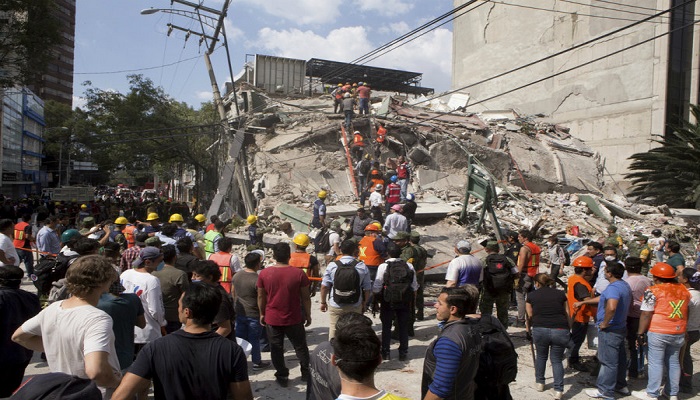
The Popocatepetl volcano looks to have woken up on Saturday as it was seen spewed vapor and ash-filled gas capping an intense period of seismic activity including two powerful tremors this month that have killed more than 400 people and caused damage of up to $8 billion.
A magnitude 6.2 aftershock that shook Mexico on Saturday was blamed for five deaths, spreading fear among anxious residents reeling from a string of natural disasters and interrupting the search for survivors from a bigger tremor earlier this week.
Tuesday’s quake hit on the anniversary of a 1985 tremor that, by some estimates, killed 10,000 people.
Concern that the aftershock could cause further collapses paralyzed rescue efforts at a housing complex in the Tlalpan neighborhood of Mexico City, frustrating first responders who believed people were alive under the rubble.
By the evening, hard-hatted first responders were again digging for bodies or survivors in a dwindling number of rubble heaps. Their work barely skipped a beat elsewhere when earthquake alarms twice rang out across the city.
Mexico’s capital was shattered by Tuesday’s magnitude 7.1 quake that flattened dozens of buildings and killed at least 307 people. The government’s response to the disaster is under close scrutiny ahead of a presidential election next year.
Although the latest quake was not as destructive, fear is running high among the population. Tents were set up in different parts of the city where psychologists offered mental health support to survivors and rescuers traumatized by the natural disasters. Acts of solidarity came from all corners of Mexican society.
The United States Geological Survey said the latest quake was relatively shallow with an epicenter near Juchitan, a tropical region of Oaxaca state hard hit by a massive 8.1 magnitude tremor that struck on Sept. 7.
Mexico’s seismological authorities said it was an aftershock of the Sept. 7 tremor, which was the strongest to hit the country in 85 years and killed at least 98 people.

Post Your Comments